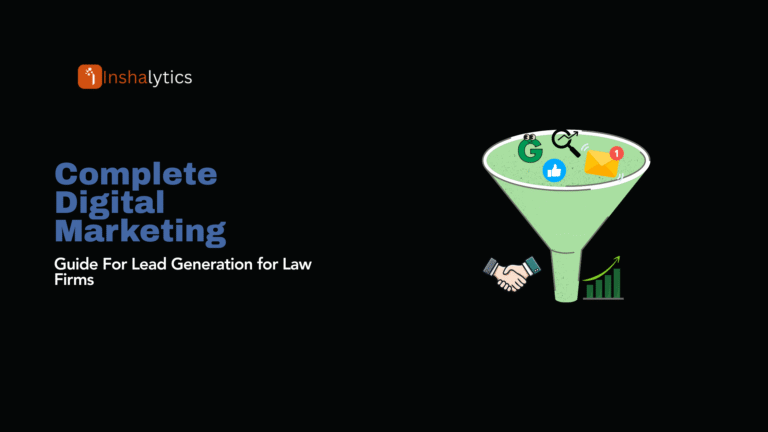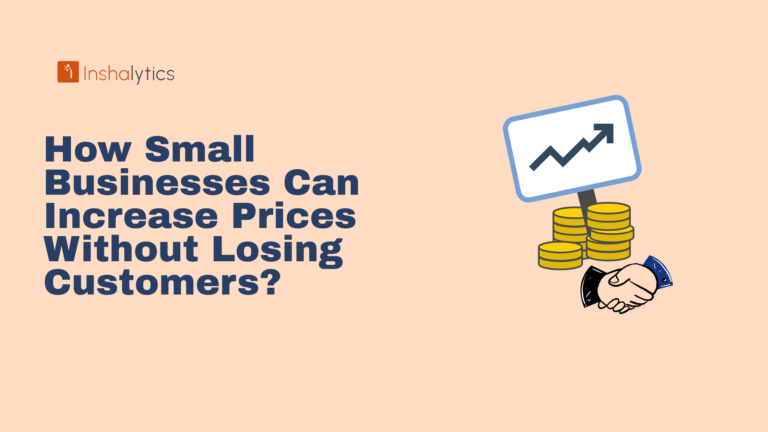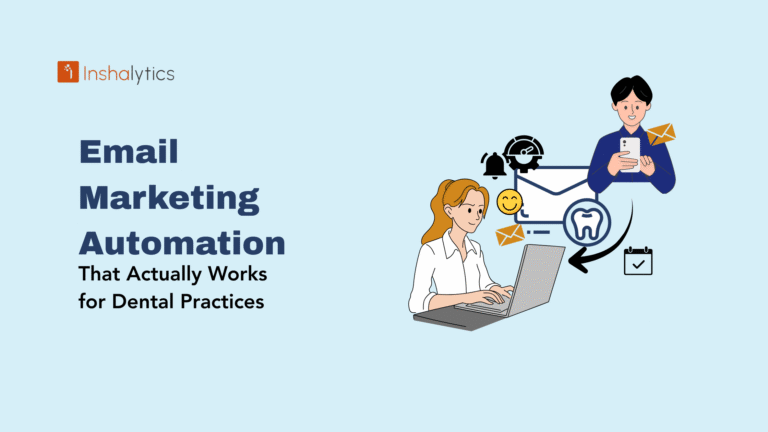The wedding industry operates on predictable cycles that savvy vendors can leverage for maximum visibility. With 40% of engagements happening between Thanksgiving and Valentine’s Day, and wedding season peaking from May through October, your marketing strategy needs to align with these natural rhythms. This guide breaks down exactly when to deploy specific tactics so you’re visible when couples are actively searching for vendors like you.
Understanding Wedding Industry Peak Season and Engagement Cycles
Success in wedding marketing starts with understanding the three distinct seasons that drive your business throughout the year.
When Is Peak Wedding Season?
Peak wedding season runs from May through October, with October claiming the top spot as the most popular wedding month at 17% of all weddings. Fall dominates with 42% of couples choosing September, October, or November for their celebrations, while summer accounts for 28% of weddings. These months offer ideal weather conditions across most regions, making outdoor ceremonies and receptions feasible without weather-related risks.
During peak season, vendor availability becomes scarce and prices reach their highest points. Venues and popular photographers book out months in advance, which means couples often secure these vendors 12-18 months before their wedding date. Your marketing during this period focuses on maintaining visibility and capturing last-minute bookings while showcasing real weddings as they happen.
The Engagement Season Window (November-Valentine’s Day)
Engagement season represents your most critical booking window. This period between Thanksgiving and Valentine’s Day accounts for 40% of all proposals annually. December leads as the single most popular engagement month, with Christmas Day, New Year’s Eve, and Valentine’s Day marking peak proposal dates.
This window creates a surge of newly engaged couples who transition quickly into vendor research mode. Most couples begin serious venue and photographer searches within the first 1-2 months after getting engaged. Your visibility during this period directly impacts your booking calendar for the following 12-18 months. Strong marketing, combined with monthly financial reporting, helps vendors track ROI on campaigns and reinvest in strategies that align with seasonal demand.
Why Timing Your Marketing Matters?
Wedding planning follows a predictable timeline. Couples typically book their venue first, usually 12-15 months before the wedding date. Photographers, caterers, and other major vendors get secured 10-12 months out, while smaller details like favors and final décor decisions happen 3-6 months before the event.
Your marketing must reach couples at the right stage of this journey. A bride searching for venues in January 2026 is likely planning a spring or summer 2027 wedding. Understanding this lag time prevents wasted ad spend on couples whose timelines don’t align with your availability.
Local SEO: Your Foundation for Being Found
Local search optimization forms the bedrock of sustainable wedding vendor marketing. While paid ads provide quick visibility, organic search delivers qualified leads year after year without ongoing costs.
Optimizing for Location-Based Keywords
Wedding searches are inherently local. Couples search for “wedding photographer Chicago” or “wedding venues near me,” not generic terms. Your website needs to target these geo-specific keywords throughout your content.
Include your city, neighborhood, and surrounding areas naturally in your homepage, about page, and service descriptions. Create dedicated location pages if you serve multiple markets. For example, a photographer covering both Baltimore and Washington DC should have separate pages optimized for each market with unique content about venues and locations in each area.
Google Business Profile Setup and Reviews
Your Google Business Profile may be the first thing couples see when searching for wedding vendors. Complete every section: business hours, service areas, categories, and booking links. Upload high-quality photos regularly, showcasing recent work to keep your profile fresh.
Reviews drive both rankings and conversions. A profile with 50+ positive reviews ranks higher and converts better than competitors with fewer testimonials. Implement a systematic review request process: email couples 1-2 weeks after their wedding, thanking them and including a direct link to leave a Google review. Make it effortless.
Wedding-Specific Keyword Research Strategies
Generic keywords like “wedding photographer” are too competitive and too broad. Instead, target long-tail keywords that indicate stronger intent: “intimate wedding photographer [city],” “luxury wedding venues [region],” or “all-inclusive wedding packages [location].”
Use Google Keyword Planner to identify search volumes and competition levels. Look for keywords with 100-500 monthly searches and low-to-medium competition. These sweet-spot keywords are specific enough to rank for while still bringing meaningful traffic.
The Role of Blogging in Wedding SEO
Blogging remains one of the most effective SEO strategies for wedding vendors. Each blog post creates a new indexed page targeting specific keywords while demonstrating expertise to both search engines and potential clients.
Publish 2-4 blog posts monthly, focusing on real weddings, venue guides, planning tips, and seasonal inspiration. A wedding planner might write “Spring Wedding Timeline: Month-by-Month Planning Guide” or “Top 10 Outdoor Wedding Venues in [City].” These posts answer real questions couples are searching for while naturally incorporating relevant keywords.
Pre-Season Marketing Preparation (Slow Season Activities)
Your slow season typically January-February for northern venues or June-August for extreme heat climates is when you build the foundation for a successful booking season.
Website Audit and Technical SEO
Use your downtime to address technical issues hurting your search rankings. Check your site’s mobile responsiveness, page load speed, and broken links. Ensure all images have descriptive alt text. Verify that your contact forms work properly and your booking calendar stays updated.
Run your site through Google PageSpeed Insights and address any issues flagged. A slow website drives potential clients away and hurts your search rankings. Compress images, minimize code, and consider upgrading your hosting if performance lags.
Creating a Content Calendar for Peak Season
Planning content in advance prevents scrambling during the busy season. Create a 90-day content calendar covering engagement season through early wedding season. Schedule social media posts, blog articles, email newsletters, and Pinterest pins.
Batch-create content when you have time. Photograph 20-30 social media posts in one session with various setups and props. Write multiple blog posts in a day, then schedule them to publish throughout the busy season. This frontloading ensures consistent marketing even when you’re managing multiple events per weekend.
Building Your Strategic Partnerships
Slow season is relationship-building season. Reach out to complementary vendors photographers, florists, caterers, planners for coffee meetings or collaboration opportunities. These relationships generate referrals and create opportunities for styled shoots, vendor directory links, and cross-promotion.
Consider forming a small SEO collaboration group with 3-5 non-competing vendors. Link to each other’s websites from blog posts and resource pages. These quality backlinks improve everyone’s search rankings while providing value to couples seeking vendor recommendations.
Pinterest Strategy and Pin Batching
Pinterest drives massive wedding traffic, with over 40 million users planning weddings on the platform. Create a business account and verify your website. Organize boards by wedding style, season, venue type, and specific services.
Design 50-100 pins during the slow season using Canva templates. Include your logo, website URL, and compelling text overlays on stunning images from past weddings. Schedule these pins to publish consistently throughout engagement and wedding season using Pinterest’s native scheduler or tools like Tailwind.
Engagement Season Marketing Tactics (November-February)
When 40% of couples get engaged, your marketing intensity should match their excitement and urgency.
Ramping Up Your Social Media Presence
Increase posting frequency during engagement season. Share recent work, behind-the-scenes content, planning tips, and client testimonials. Instagram and Facebook see peak engagement from newly engaged couples scrolling for inspiration.
Post daily during this critical window. Use Instagram Stories to share quick tips, venue tours, and real-time updates. Create Reels showcasing venue transformations, detail shots, or planning advice. These short-form videos receive preferential algorithm treatment and reach beyond your current followers.
Targeted Google Ads Campaigns
Google Ads captures high-intent traffic when couples actively search for vendors. During engagement season, bid on keywords like “[your service] [your city]” and “[your venue type] wedding venues near me.”
Set geographic targeting to your service area and adjust bids based on proximity to your location. Create separate ad groups for different services or venue types, each with tailored ad copy and landing pages. Monitor performance weekly and adjust bids on keywords driving inquiries while pausing underperformers.
Email Marketing to Engaged Couples
Your email list is a direct line to potential clients. Send bi-weekly newsletters during engagement season featuring planning tips, recent work, limited-time promotions, and upcoming availability.
Segment your list by inquiry date and booking status. Send different content to warm leads who inquired but haven’t booked versus cold subscribers who signed up for your planning guide. Personalization improves open rates and conversions significantly.
Wedding Directory Listings and Optimization
List your business on The Knot, WeddingWire, and regional wedding directories. These platforms attract couples specifically searching for vendors, making them higher-intent than general Google searches.
Complete your profiles thoroughly with professional photos, detailed service descriptions, pricing guidance, and client reviews. Update your profiles monthly with fresh photos and respond promptly to inquiries. Many directories factor responsiveness into search ranking algorithms.
Peak Wedding Season Marketing (May-October)
When you’re busiest executing weddings, maintaining marketing momentum ensures next year’s calendar stays full.
Maintaining Consistency During Busy Season
Your pre-season content batching pays off now. Scheduled posts keep your social media active while you’re managing events. Quick 2-3 minute tasks between weddings responding to comments, sharing Instagram Stories, posting a quick photo maintain engagement without overwhelming your schedule.
Dedicate Sunday evenings or Monday mornings to light marketing tasks: scheduling the week’s social posts, responding to inquiries, and updating availability calendars. Consistency matters more than perfection during peak season.
Real-Time Social Proof: Reviews and Testimonials
Create a post-wedding email template that automatically sends 7-10 days after each event. Thank the couple, ask for feedback, and include direct links to leave reviews on Google, social media, and wedding directories.
Transform positive reviews into social media content. Create branded graphics featuring testimonial quotes and share across platforms. Each review serves triple duty: boosting search rankings, providing social proof, and creating shareable content.
Nurturing Vendor Relationships for Referrals
Peak season means constant vendor interaction at weddings. These touchpoints strengthen relationships that drive referrals. Thank photographers for beautiful images, compliment florists on stunning arrangements, and acknowledge planners’ organizational skills.
Follow up after shared events with personalized messages: “Loved working with you at Sarah and Mike’s wedding! Your floral installations were stunning.” These genuine connections lead to vendor referrals when photographers recommend your venue or planners suggest your catering services.
Guest Experience Touchpoints for Word-of-Mouth
Wedding guests are future clients. Every interaction from parking assistance to bar service to farewell send-offs shapes their perception of your business. Train your team to deliver exceptional service at every touchpoint.
Encourage guests to tag your business in social media posts during events. Create Instagram-worthy moments specifically for guest sharing: unique cocktails, photo installations, or memorable entertainment. Each guest tag expands your reach to their network of friends, potentially planning their own weddings.
Platform-Specific Strategies
Different platforms serve different purposes in your marketing ecosystem. Strategic use of each maximizes your visibility across the couple’s research journey.
Instagram: Visual Storytelling for Wedding Vendors
Instagram is where couples discover and fall in love with vendors before ever visiting a website. Your feed should tell a cohesive visual story that reflects your brand aesthetic and target market.
Post high-quality images showcasing your best work: stunning venue shots, emotional moments, beautiful details, and happy couples. Use Reels for behind-the-scenes content, time-lapses, and planning tips. Stories provide daily touchpoints with followers through polls, Q&As, and real-time wedding coverage.
Pinterest: The 40-Million-User Opportunity
Pinterest functions as a visual search engine where couples actively seek inspiration and vendors. Optimize pins with keyword-rich descriptions, relevant hashtags, and links back to your website.
Create boards for various wedding styles, seasons, and themes. Pin consistently at least 10-15 pins daily, including your own content and relevant inspiration from others. Pinterest rewards consistent activity with increased visibility in search results and home feeds.
Wedding Marketplaces: The Knot and WeddingWire
These platforms dominate wedding vendor searches. While premium placements cost money, even basic listings provide valuable backlinks and exposure. Couples often discover vendors on these platforms, then visit websites and social media before inquiring.
Upgrade to premium listings if budget allows, prioritizing one platform rather than spreading budget across multiple directories. Premium features like priority placement, storefront customization, and promoted listings significantly increase inquiry volume during peak season.
Google Ads for High-Intent Wedding Searches
Google Ads captures couples at the moment they’re actively searching for specific vendors. Unlike social media browsing, these searches indicate strong purchase intent and timeline urgency.
Focus on exact match keywords during engagement season when search volume peaks. Create compelling ad copy highlighting your unique selling points: availability, packages, awards, or specialty services. Direct traffic to dedicated landing pages designed for conversions, not your generic homepage.
Content Marketing That Converts Couples
Content serves dual purposes: improving SEO while providing value that moves couples toward booking.
Creating Seasonal Content That Resonates
Align content with what couples experience right now. In November, publish engagement announcement ideas and winter proposal stories. In January, focus on venue selection guides and vendor booking timelines. In spring, share summer wedding inspiration and guest experience tips.
This seasonal alignment improves relevance both for couples and search engines. Blog posts published in December about “Spring Wedding Planning Checklist” rank well when couples search for that content in January and February.
Answering Common Wedding Planning Questions
Every question a couple asks represents a content opportunity. Create blog posts, videos, or social media content addressing common concerns: “How far in advance should we book our venue?” “What’s included in full-service catering?” “How do we create a rain plan for outdoor weddings?”
This educational content positions you as an expert while capturing search traffic from couples researching these topics. Include clear calls-to-action guiding readers to contact you or download your planning guide.
Showcasing Real Weddings and Client Stories
Real wedding features showcase your work while providing extensive SEO value. Each feature creates opportunities to naturally incorporate keywords, showcase your venue or services, credit vendor partners, and demonstrate your capabilities.
Include a couple of testimonials, detail shots, ceremony and reception coverage, and vendor credits. Optimize with descriptive image alt text, keyword-rich headlines, and internal links to relevant service pages. These comprehensive posts often become your highest-traffic content.
Video Content and Virtual Tours
Video content receives preferential treatment across social media algorithms and engages couples more deeply than static images. Create venue tours, planning tip videos, testimonial compilations, and wedding day highlights.
For venues, invest in professional virtual tours, allowing couples to explore your space online. This immersive experience helps couples pre-qualify themselves, reducing time spent on tours with couples who aren’t the right fit.
Measuring Success and ROI
Marketing without measurement is guesswork. Track specific metrics to understand what’s working and where to invest.
Key Metrics to Track for Wedding Businesses
Website traffic, inquiry form submissions, social media engagement, and booking conversion rates tell your marketing story. Use Google Analytics to monitor traffic sources, popular pages, and user behavior patterns.
Track inquiries by source: How many came from organic search, versus Instagram, versus paid ads? Calculate the cost per inquiry for paid channels. Monitor your booking conversion rate what percentage of inquiries convert to signed contracts? Industry averages hover around 20-30%, though this varies significantly by service type and price point.
From Traffic to Inquiries: Conversion Optimization
Traffic means nothing if visitors don’t inquire. Review your website’s user experience: Is your contact form easy to find? Do you require too much information upfront? Is your pricing clear enough to pre-qualify visitors?
Test different call-to-action buttons, form placements, and page layouts. Small changes moving your inquiry form higher on the page or reducing required fields from eight to four can dramatically impact conversion rates.
Understanding Your Customer Journey
Map how couples discover you, what touchpoints they interact with before inquiring, and how long your sales cycle runs. Most couples visit your website 3-5 times and check multiple platforms before reaching out.
This insight shapes your retargeting strategy, email nurture sequences, and content creation. If couples typically inquire 6-8 weeks after first discovering you, your follow-up systems need to nurture that relationship throughout their consideration period.
Off-Peak Season Strategies
Smart marketing fills slower periods with bookings at profitable rates.
Weekday and Off-Season Promotions
January, February, and March weddings account for only 12% of annual bookings, creating an opportunity for strategic promotions. Offer weekday discounts, off-season packages, or value-added incentives for these slower dates.
Market these promotions to budget-conscious couples or those planning intimate celebrations who prioritize value over peak season prestige. Highlight benefits beyond price: more vendor availability, personalized attention, and unique seasonal aesthetics like winter wonderland themes.
Package Deals and Value Positioning
Bundle services at attractive price points to drive off-season bookings. All-inclusive packages simplify decision-making while locking in multiple revenue streams. Market these packages during engagement season to couples just beginning their planning journey.
Position off-season dates as smart choices, not compromises. Emphasize the benefits: better pricing, increased availability, and unique seasonal beauty. Share stunning photos from past off-season events proving that February weddings can be as gorgeous as October celebrations.
Building Your Email List for Future Seasons
Your slow season is list-building season. Create valuable lead magnets: comprehensive planning guides, budget worksheets, or venue selection checklists. Promote these resources through social media, your website, and wedding directories.
Every email subscriber represents a potential future client or referral source. Nurture this list with regular, valuable content, not just promotional messages. The couple planning a 2027 wedding might not book now, but consistent, valuable touchpoints keep you top-of-mind when they’re ready.




